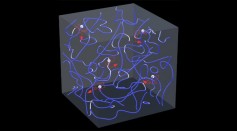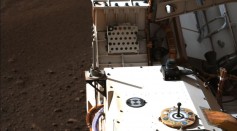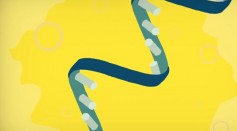Mark Bustos
Scientists Looking to Use Nuclear Detonations to Deflect Asteroids

Tech Leader Salesforce Steps Up Vaccine Cloud for Faster Vaccine Scheduling
Facing "The Challenges of Tomorrow": French Army Tests Spot the Robot Dog for Military Applications

‘Godzilla’ 6-Foot Monitor Lizard Invades 7/11 Convenience Store in Thailand
Dead Whales Washed Up in Sea: Four in San Francisco Bay, Two More in Bangladesh

Researchers Track, Visualize Vortices in Quantum Fluid Turbulence
Neural Network From Brain to Eyes Evolves Much Earlier, Fish Genetics Study Shows
Spacing in Text Logos Affect Customer Opinion, Here's What Designers Should Do

NASA Receives First Weather Report from Mars's Jezero Crater

Researchers Show How XNAs Kickstarted the Origin of Life

New Technology Could Power Wearables Only Using Body Heat

Not Always the Alphas: Researchers Discover That Female Sheep Prefer Less Dominant Males as Mates
Scientists Release "More Accurate" Representations of Ancient Hominids
New Mechanism Allows Electrical Control of the Magnetism in Nanodevices
Most Popular

How Technology Is Changing the Real Estate Industry?

Study Reveals High Turnover in Scientific Research Careers: What This Means for Future Scientists

Nikolay Karpenko Biography, Photo, Career, Accomplishments

China’s Tiangong Space Station to Expand Its Capabilities With New Modules





